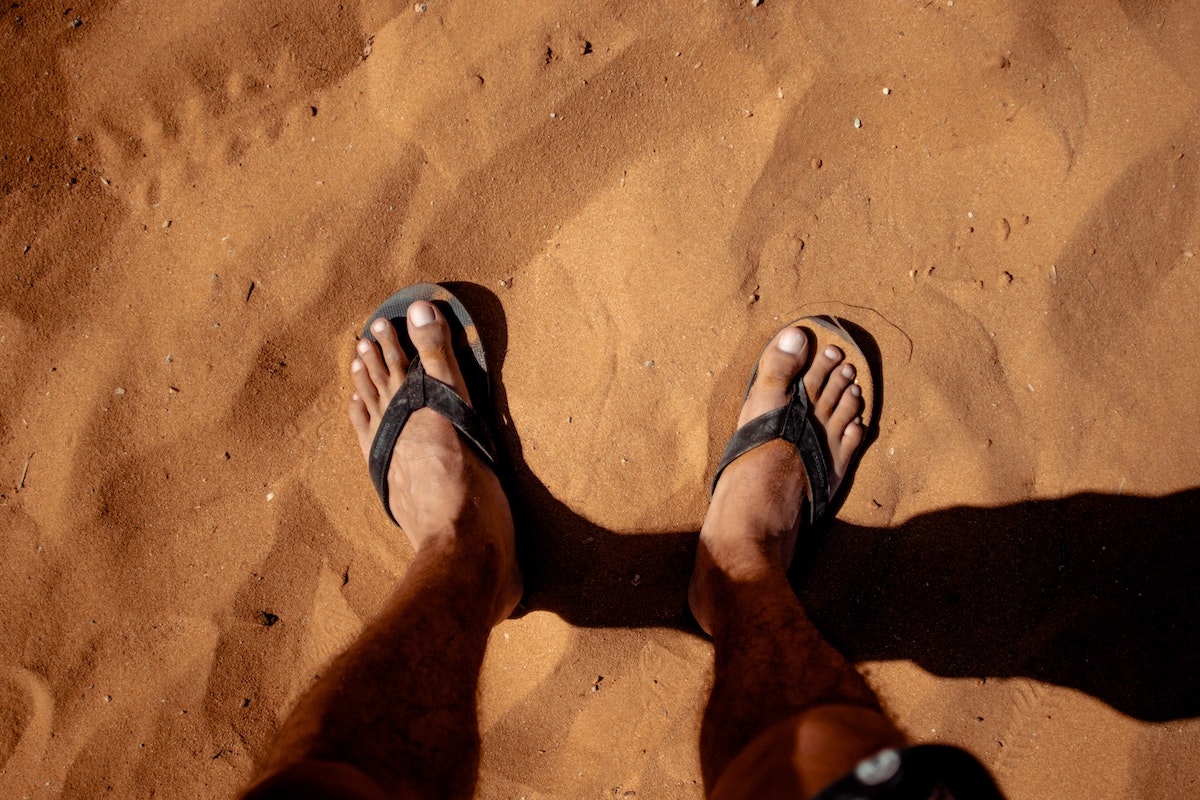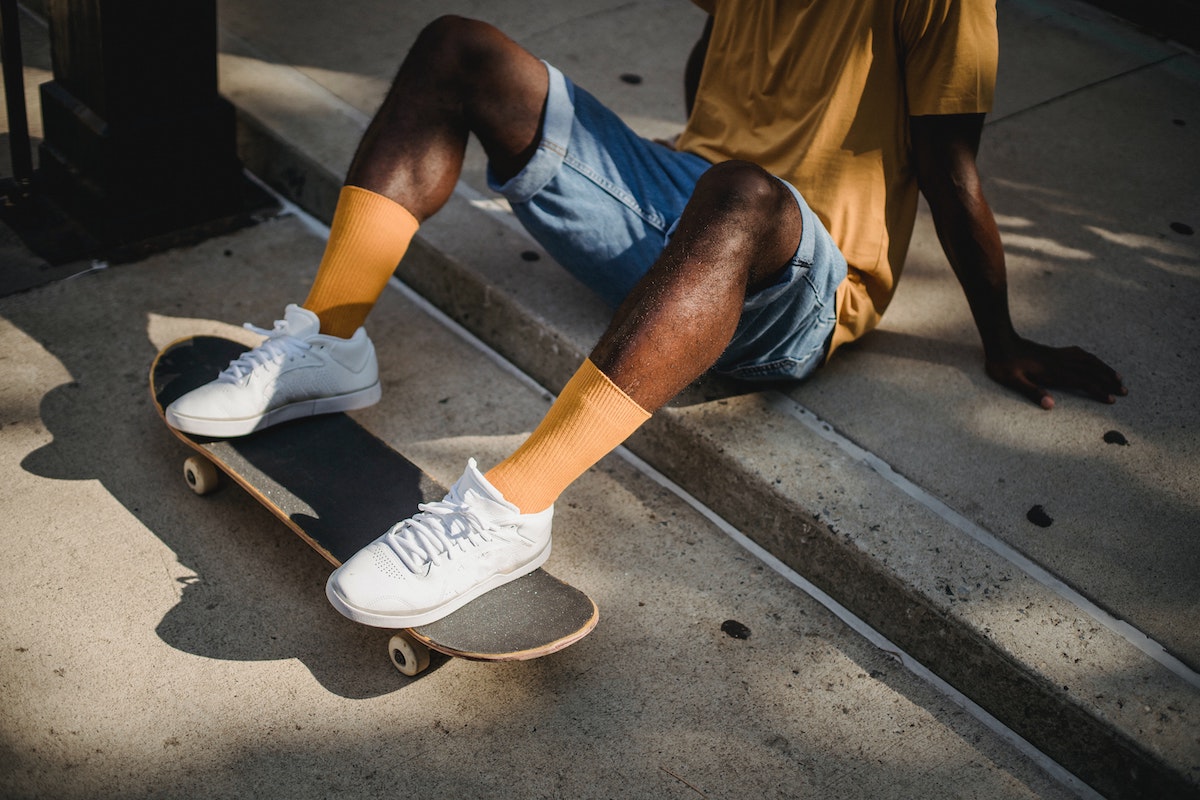Time to ditch the boots and sneakers. Flip-flop season is heading our way. Warmer, longer days may be something you look forward to each year. There’s something to be said for al fresco dining and getting out of work before sunset.
However, warm-weather footwear puts feet on full display. That means cracked heels, long nails, and other pesky issues will be noticeable as far as the eye can see.
The last thing you want to consider when hanging out on the beach or at a backyard bash is whether someone is silently judging your feet. A little foot care will ensure happy, healthy feet all summer. Step out worry-free with these pre-summer foot care tips.

The TLC your feet need before summer
Before the mercury rises and flip-flops go from occasional treat to mainstay, you can do some quick maintenance to get your feet in tip-top shape.
Ditch dead skin by filing and exfoliating
Work quickly to speed up skin turnover if your heels are especially cracked. Exfoliating helps with that. Opt for an exfoliant with lactic acids that stands up to the tough, calloused, dry skin on heels.
From there, you can use a pumice stone to whittle down the callouses — it’ll be softer from the water and exfoliant.
Take care of skin with moisturizing
Dry indoor air — common when the heat is on each winter — can do a number on your feet. This dry air may make them feel dry and cracked (similar to your lips). You’ve likely heard that you should apply moisturizer to your face daily, and Chapstick may be a staple to your routine.
If your feet need some TLC, add a foot cream, too. Creams with hyaluronic acid and ceramides can be incredibly soothing. Pro tip: Moisturize after exfoliating to soothe irritation from hasher ingredients designed to promote skin turnover.
Trim nails to keep them under control
Gentlemen, take care of the basics. If you do one thing, cut your toenails. It’s a good idea to take this step even during closed-toe shoe season, as it wards off breaks and ingrown nails. However, if you’ve slacked, now is the time to start. Getting toes under control ensure your feet look polished. Consider treating yourself to a pedicure — they’re trending in the men’s space.
Apply sunscreen
Your feet have skin. When they’re exposed to the sun, you’ll want to ensure they get slathered in sunscreen like the rest of your body. This step will prevent foot pain and redness. More importantly, SPF is one of your best defenses against skin cancer. Opt for a sunscreen with SPF 30+, and be sure to repeat this step during the summer, too.)
Change your socks regularly
Are you guilty of wearing the same gym socks multiple days in a row? We’re not here to judge, but we suggest ditching the habit. Fungus and bacteria thrive in damp environments, which applies to sweaty socks. Taking this step wards off issues like athlete’s foot.
Getting help if you have a foot fungus/athlete’s foot
Athletes’ foot and foot fungus can cause bothersome symptoms like itching. They are also often contagious. Many ointments and gels are available over-the-counter to help you treat it, but it’s best to call a doctor to get a proper diagnosis. Your provider can also give you tips for preventing it in the future.

Consider making a shoe change
You can do all the pampering you want. A bad shoe can undo all of your hard work. Here’s how to find one for you and what to do after you make the purchase.
Find better shoes
Shoes that are too big, too small, or incredibly unsupportive and uncomfortable can cause foot pain and aesthetic problems. For example, small shoes can rub against the toenails and cause breakage. Generally, you should have a half an inch between your biggest toe and the tip of the shoe if you’re going with a closed-toe shoe (which you likely will at least part of the summer, such as in the office).
Some shoes have perks like cushioned footbeds and memory foam designed to make you feel like you’re walking on clouds and may protect against cracked skin. If you have foot discomfort, talk to an orthopedist or podiatrist.
Break in your shoes
Make sure you break in sneakers, sandals, and work shoes. Wear them around the house for a couple of minutes per day. This step also gives you a feel for whether or not the shoe truly fits. If it doesn’t? Exchange or return it. Your feet will thank you.
Prepping for summer should involve some treats for your feet. A little pampering can go a long way in having healthy feet in time for open-toed shoe season. Products, such as foot creams and exfoliants, can help you ditch the dry skin and callouses that may have developed during the winter. Speak with a podiatrist if you have issues like athlete’s foot or chronic foot pain. They can provide treatments and help you prevent the problems from popping back up if possible. Be sure to apply sunscreen and trim nails regularly, especially with feet exposed more often as summer draws near.



